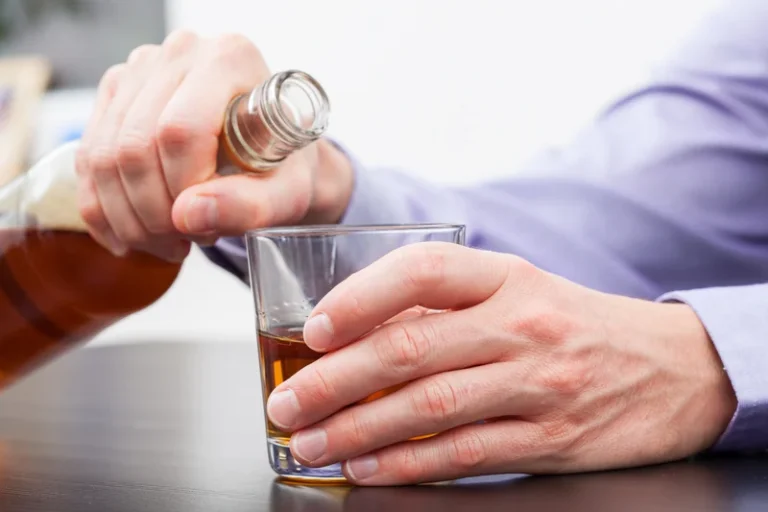
In their paper, the researchers also hint at the possibility of conducting additional studies on this topic using the digital medical data collected during the COVID-19 pandemic, when more individuals accessed online medical services instead of visiting health care facilities. Drastic changes in wealth or financial difficulties resulting from these stock market fluctuations could potentially also affect the mental and physical health of investors. In fact, some recent reports have found a correlation between stock market fluctuations and specific physical and psychological issues.
Tolerance, Physical Dependence, and Addiction Explained

Nevertheless, numerous pharmacotherapies have been employed to treat alcoholism, guided principally by advancing knowledge about alcohol’s interactions with various components of the brain’s reward and stress pathways (Heilig and Egli 2006; Litten et al. 2005; Spanagel and Kiefer 2008). It has been postulated that naltrexone may blunt the rewarding effects of alcohol, whereas acamprosate may attenuate adaptive changes during abstinence that favor relapse (Heilig and Egli 2006; Litten et al. 2005). People who have a physical dependence on a substance, such as drugs physiological dependence on alcohol or alcohol, will experience withdrawal symptoms when they stop using the substance or reduce the amount of substance used. While drinking in moderation may not pose major health risks for adults, drinking excessively every day can lead to unhealthy habits and can be a sign of alcohol addiction. Moderate to heavy alcohol consumption impairs your coordination and can cause serious health problems over time. The effects of alcohol on the body from an addiction can affect your immune system and vital internal organs, such as the brain, heart, liver and more.
- In fact, both physical and psychological addiction activate similar regions of the brain.
- Furthermore, people with psychological dependence will experience strong and recurring urges to use drugs, even when they want to stop.
- Participants were instructed to only consider free time (i.e. not at school) and not to double count time; if they were watching videos and scrolling on their phone, they allocated time to one or the other.
Narcotics: Avoidance is a Trick of Addiction
- If you are physically dependent on alcohol, you may feel like you are unable to function without it and experience obsessive thoughts about drinking.
- Remarkably, the inhibitory action of alcohol on these key receptors was not identified until 1989 (Lovinger et al. 1989).
- Taken together, these results indicate that chronic alcohol exposure involving repeated withdrawal experiences exacerbates withdrawal symptoms that significantly contribute to a negative emotional state, which consequently renders dependent subjects more vulnerable to relapse.
- According to the classical double dissociation model, to be able to draw the conclusion that a certain brain structure or network is the neural source of a particular cognitive or motor function, it is essential to demonstrate first an association between the two.
However, over time, a physical state of tolerance means your body needs more drugs or alcohol to feel their effects. While drinking alcohol may be an enjoyable way to spend time with others, feeling like you or a loved one can’t stop or cut down on alcohol use can be an alarming experience. If you’re concerned about your drinking habits, it may be beneficial to have a conversation with a health care professional and discuss ways to avoid (or manage) a physical or psychological dependence. Another option could be to seek counseling, where you or a loved one could explore the relationship with alcohol and learn about alternative coping mechanisms.

Stages of Substance Use

These studies have resulted in the identification of alcohol reward brain systems (Makris et al. 2008) (see figure 6). Brain regions commonly invoked in rewarding conditions are the nucleus accumbens and ventral tegmental area. As a point of translation, these brain regions identified in humans also are implicated in animal models of alcohol dependence and craving (Koob 2009).

How does addiction affect the brain and behavior?
Adolescence is a critical developmental period that shapes health outcomes well into adulthood (Sawyer et al., 2012). The peak age of onset for mental disorders occurs in adolescence (at age 14.5), and ~ 50% of all mental disorders emerge before the age of 15 (75% by the age of 25) (Solmi et al., 2022; McGrath et al., 2023). Mental health issues that arise during adolescence typically track into adulthood (Jones, 2013), and mental disorders are the 7th highest cause of disease burden https://ecosoberhouse.com/article/10-major-physical-signs-of-alcoholism-to-watch-out-for/ worldwide, which is a rise from 13th in 1990 (GBD 2019 Mental Disorders Collaborators, 2022). The National Institute on Drug Abuse (NIDA) reports that substance abuse and addiction result in a financial burden of more than $600 billion annually for American society, which includes healthcare expenses, legal and criminal justice costs, and decreased workplace productivity. Within one to four days of discontinued use of Benzos, users may start experiencing insomnia and anxiety.
Physical vs. Psychological Addiction
- Others seem more affected mentally, as you develop a deeply rooted craving for a certain substance that changes your psychological behaviors.
- However, their mind creates an extreme desire for it that can negatively impact them in many ways causing loss of sleep, anxiety, depression, and changes in appetite.
- This is particularly apparent when examining an individual’s risk of alcohol-related harm at a given level of alcohol consumption.
- People aged 75 years and older had the highest suicide rate among all age groups, largely driven by males.
- Illegally produced amphetamines, such as meth, are sometimes mixed with caffeine, sugar, and a binding agent.
- The Kessler 6-item scale (K6) is a measure of psychological distress with predictive ability to identify common mental disorders among adolescents, including major depressive disorder, generalised anxiety disorder, and bipolar disorder (Ferro, 2019).
